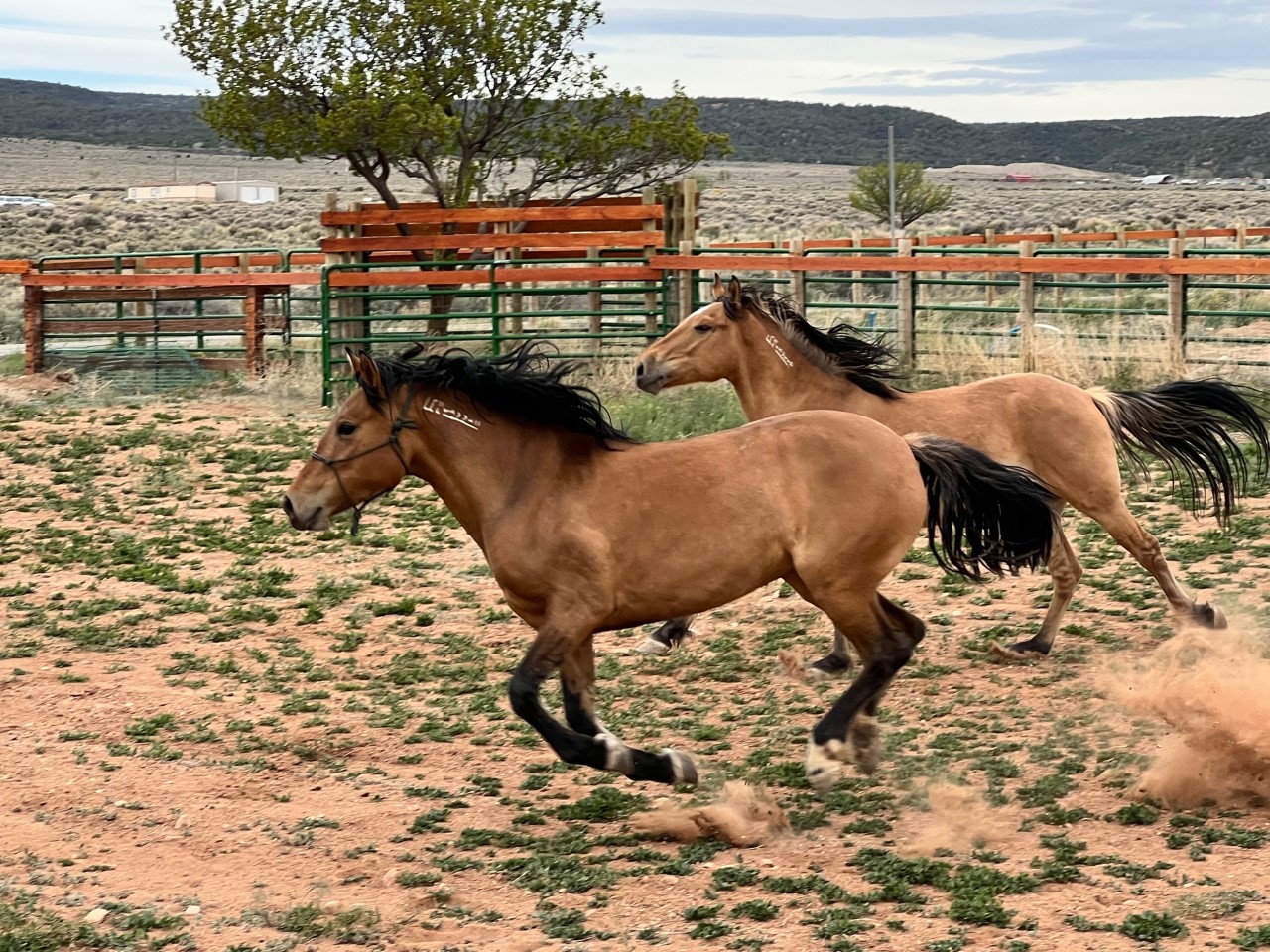Some information may be outdated.
Throughout his career as a history programs professional, Stephan Zacharias has celebrated International Heritage Breeds Week in the third week of May: the week is promoted by the Livestock Conservancy to bring recognition to endangered heritage breeds.
Now that Zacharias works at the Moab Museum, he’s recognizing International Heritage Breeds Week with a lineup of events showcasing local heritage breeds.
“The main goal is to bring public awareness to these animals—to let people know they exist,” Zacharias said. “We’re trying to find ways for heritage breeds to be put back to work. Without a job, they’ll go extinct.”
The events begin on Wednesday, May 17 with a spotlight on the Navajo-Churro sheep, the oldest breed of domestic sheep in the U.S. At 11 a.m. and 2 p.m. on the Museum lawn, visitors can observe one of these sheep for themselves while Sam Cunningham, owner of Cunningham Farms, talks about her relationship to the animals. Cunningham is a member of the Navajo-Churro Sheep Association and she has been raising sheep for over 40 years.

The sheep are descended from the Spanish “Churra” sheep, and are the result of years of selective breeding by Hispanic and Indigenous people of the Colorado Plateau, according to the Livestock Conservancy. Today, the sheep are bred mainly for their fleece, which can be spun into yarn and woven.
Thursday, May 18 will highlight Utah’s Sulphur Herd mustangs. There will be a presentation at 11 a.m. and 2 p.m. by Stephen Schultz, Naomi Wilson, and Melissa Wardle, members of the Canyonlands Backcountry Horsemen of Utah, and there will be a sulphur horse on site on the Museum lawn.

Sulphur horses are a Colonial Spanish breed; they survived for centuries with “little-to-no outside influence high in the remote juniper-covered valleys of Utah’s Mountain Home Range,” according to the Moab Museum.
Wild horses face large challenges in the U.S., said Zacharias. Some consider the horses to be invasive species and in 1971, Congress enacted the Wild Free-Roaming Horses and Burros Act, which established that wild horses and burros should be protected from “capture, branding, harassment, or death.”
Programming will wrap up on Friday, May 19 with presentations on Criollo cattle, a cattle breed currently being studied at the Canyonlands Research Center.

CRC/Dugout Ranch Project Director Matt Redd and U.S. Geologic Survey Research Ecologist Dr. Mike Duniway will share what they’ve learned throughout the research project, located south of Moab.
Criollo cattle are descendants of the cattle that were introduced to the Americas by Cristopher Columbus; they originated in the arid climate of southern Spain.
Criollos are, in theory, better suited to arid climates, can travel further than Angus cattle, and have broader diets than Angus cattle, all traits that set up the breed well to survive hotter and drier climates.
The issue is their marketability: a fully grown Angus cattle is 1,200 pounds; a fully grown Criollo is only 900. This program will also include a chance for people to taste Criollo beef, prepared by local chefs.
“As a museum, we’re supposed to be here to preserve the past and tell stories of the past,” Zacharias said. “But in the case of these historic breeds, the story doesn’t stay in the past.”
“We’re showing that yes, history happened in the past,” he said, “but the past is still being used to tell our story of the future.”
Museum admission is required to attend programs (admission is $10 for adults; $8 for students, seniors, children, and active duty military; $30 for a household or family; and free for children 7 and under). Admission is free for members (individual annual membership is $25). Find more information at moabmuseum.org.
Find more information at www.moabmuseum.org. Museum admission is required to attend programs (admission is $10 for adults; $8 for students, seniors, children, and active duty military; $30 for a household or family; and free for children 7 and under). Admission is free for members (individual annual membership is $25).
[Courtesy of the Moab Museum]
Appreciate the coverage? Help keep local news alive.
Chip in to support the Moab Sun News.





